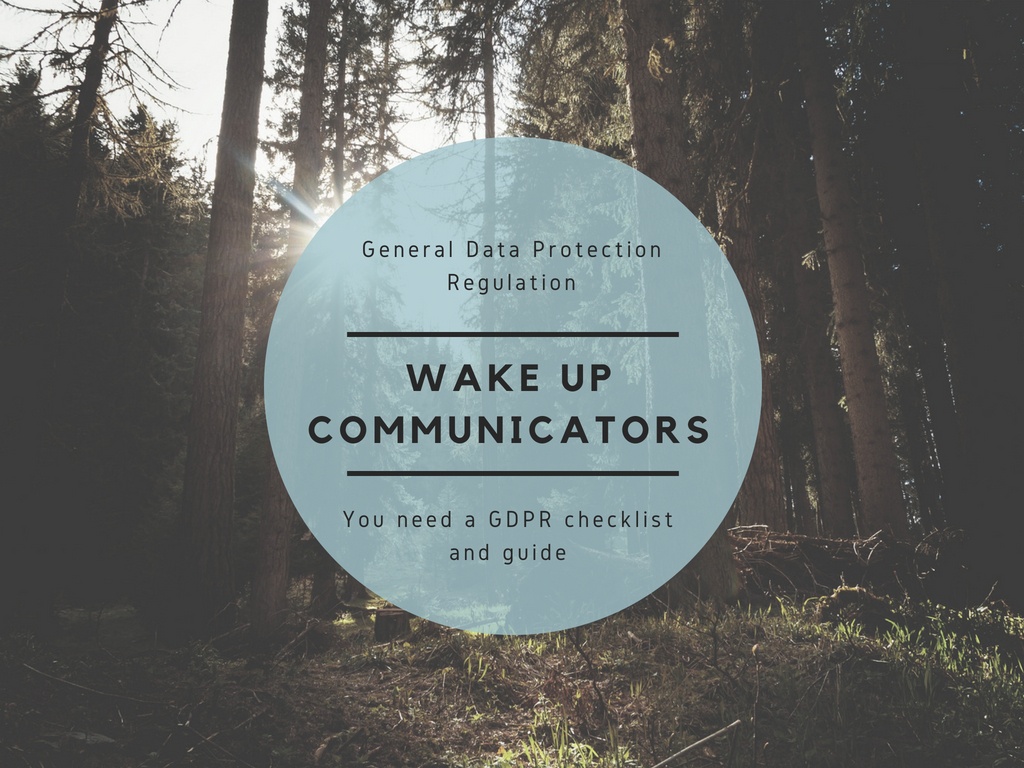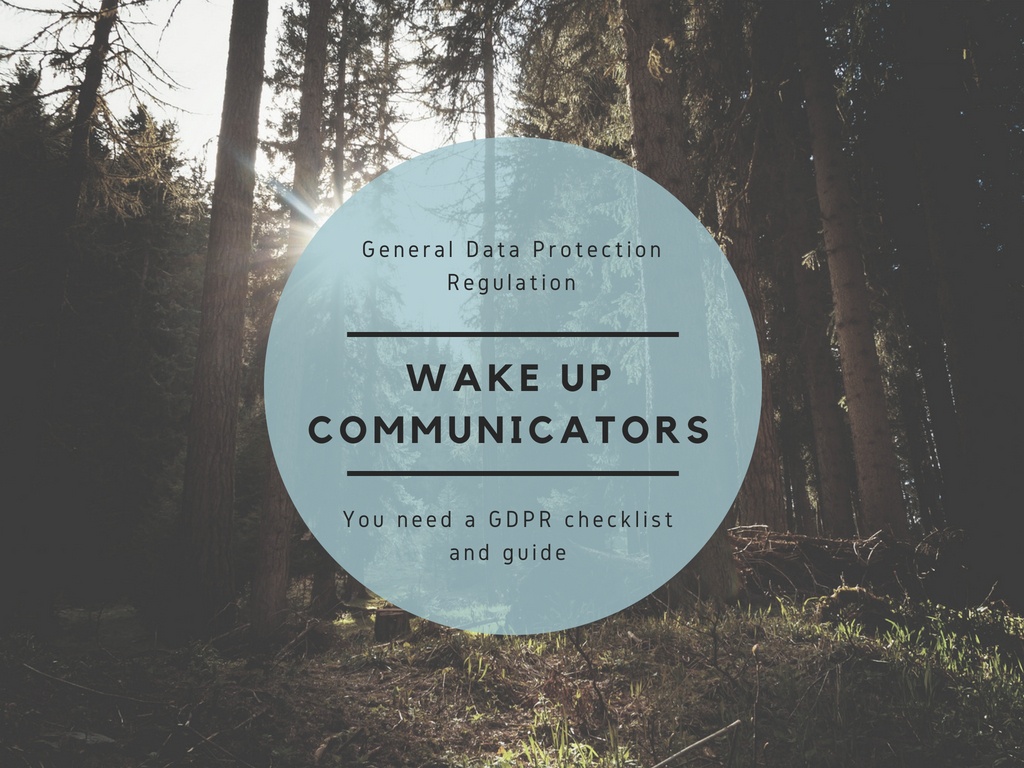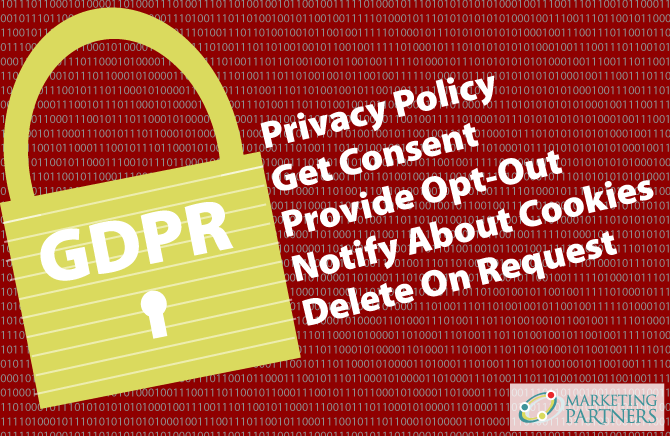How to Use Your Core Values to Inspire, Retain, and Energize Your Team
For the last few decades, but especially so in recent years, people are seeking out more than just an income from their place of employment. More...
3 min read
 Dave Bowers
:
5/10/18 11:00 AM
Dave Bowers
:
5/10/18 11:00 AM

 Later this month, on May 25, the GDPR data protection and privacy law goes into effect. GDPR, or General Data Protection Regulation, is a set of rules protecting citizens and residents of the European Union and governs how companies handle their personal data. Email marketing and marketing automation activities are clearly affected. But many small businesses and nonprofits are not aware that you also need to be sensitive to GDPR if you collect personally identifiable information in any way, including contact us forms and website analytics. There's a forest of GDPR information out there so my goal is to highlight key landmarks for you.
Later this month, on May 25, the GDPR data protection and privacy law goes into effect. GDPR, or General Data Protection Regulation, is a set of rules protecting citizens and residents of the European Union and governs how companies handle their personal data. Email marketing and marketing automation activities are clearly affected. But many small businesses and nonprofits are not aware that you also need to be sensitive to GDPR if you collect personally identifiable information in any way, including contact us forms and website analytics. There's a forest of GDPR information out there so my goal is to highlight key landmarks for you.
GDPR applies to you the moment you collect data from someone who lives in one of the 28 member countries in the EU. If you collect customer data of any kind that could be personally identifying, such as email address, name, IP address, device, etc., or you use software that does this on your behalf (tracking software, Google Analytics, marketing automation, sales CRM), then you are affected. You must follow the data privacy regulations of the GDPR. That means all organizations, everywhere that process or hold personal data of people living in the EU.
How do you know if the information you hold belongs to a member of the EU? You probably don’t. So, it is best to assume it does and use the same compliance regulations for all the data you collect.

There are many checklists and guides available to help you plan your compliance with GDPR. Here is a quick summary:
For many organizations, proving consent in your existing databases to meet GDPR standards will be difficult. You may end up needing to re-opt-in many of your marketing contacts in order to meet the new consent standards. Landing pages and forms will also need to be updated for compliance and to clearly link to your privacy policy with specific information about how the data submitted on a form will be used. You may also need to re-obtain consent for your use of customer data that you did not explicitly obtain permission for at the time of collection.
You will need to provide a disclosure statement as soon as you start collecting data. If you have website tracking software (such as Google Analytics), you should provide that statement as soon as someone visits your website.

Your disclosures should have a link to your privacy policy or statement. The statement needs to be written in clear, plain language that is accessible. It should also include information on how to contact your company to request a copy of personally identifiable information in your records, and how to remove that data.
Just about everyone with a website is, or should be, gathering website traffic data on visitors to their website and Google Analytics is used by most of you. Unfortunately, Google's guidance on GDPR compliance isn't exactly user friendly so here's a brief video from Christopher S. Penn on the subject.
It is extremely likely GDPR applies to you and your organization. It is better to take steps now to become compliant than to face possible consequences (including costly fines) later.
Disclaimer Note
The Communicator’s GDPR Checklist and Resource Guide, Spin Sucks PR
You Ask, I Answer: GDPR 101 for Marketers, C.S. Penn
Are you GDPR ready?, HubSpot
GDPR: What You Need to Know and How Constant Contact Helps You Comply, Constant Contact
The Change Conversations blog is where changemakers find inspiration and insights on the power of mission-driven communication to create the change you want to see.
© 2009- to present, Marketing Partners, Inc. Content on the Change Conversations blog is licensed under a Creative Commons Attribution-Noncommercial-NoDerivs 3.0 United States License to share as much as you like. Please attribute to Change Conversations and link to ChangeConversations.
Creative Commons License may not apply to images used within posts and pages on this website. See hover-over or links for attribution associated with each image and licensing information.

For the last few decades, but especially so in recent years, people are seeking out more than just an income from their place of employment. More...

You know nonprofit organizations need websites just as small businesses do, but you may be surprised to learn nonprofit sites can be more complex and...

In today’s rapidly evolving media landscape, understanding where and how your story is told isn’t just strategic—it’s essential. How you communicate...